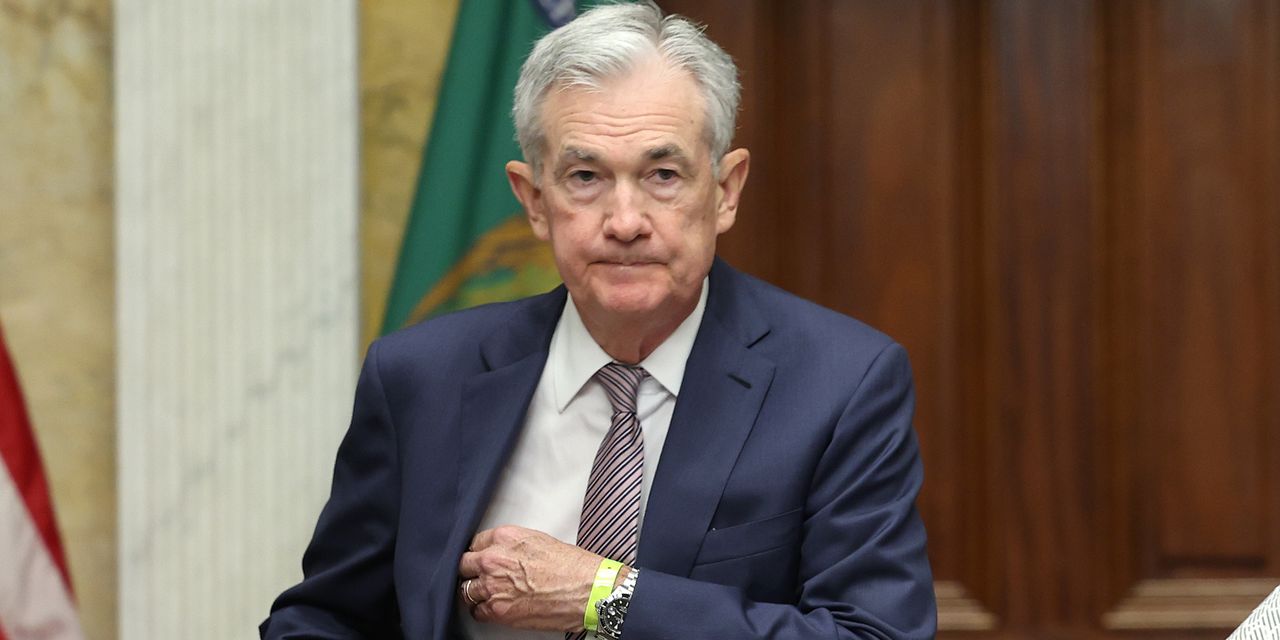An aggressive August selloff in long-dated Treasurys, which began with worries about the fiscal outlook, is now being driven by expectations U.S. interest rates likely won’t return to the past decade’s lows.
Investors and traders resumed the selloff on Monday, sending the 10-year rate
BX:TMUBMUSD10Y
to 4.339% or its highest 3 p.m. New York time level since Nov. 6, 2007. The 30-year yield
BX:TMUBMUSD30Y
ended at 4.455%, the highest closing level since April 27, 2011. The recent rise in Treasury yields is widely cited as a key contributor to an August pullback for equities, with the S&P 500
SPX
down by 4.1% this month.
Read: Rising yields put S&P 500 on pace for biggest monthly loss of 2023 as investors brace for Fed Chair Powell’s Jackson Hole speech
At the heart of Monday’s moves were questions about whether the so-called neutral rate of Federal Reserve policy, or level which is likely to prevail when the economy is operating at full strength and inflation is stable, has gone up and by how much. Economists refer to the real neutral rate of interest, after subtracting inflation, as r* or “r-star.” And it’s a topic that Fed Chairman Jerome Powell is seen as likely to delve into during his speech at the annual Jackson Hole symposium on Friday.
Read: Jackson Hole: Fed’s Powell could join rather than fight bond vigilantes as yields surge
“The market is trying to get its head around higher-for-longer rates and adjusting to what the next decade will look like,” said Robert Daly, who manages $4.5 billion in assets as director of fixed income at Glenmede Investment Management in Philadelphia. “The last decade of low rates is over. We’re going to have a higher-rate trajectory, and what the market is adjusting to is that the data is better, the economy is OK, and while inflation is coming down, it’s not at the Fed’s target of 2%.”
Via phone on Monday, Daly said the market is grappling with the “double-whammy” impact of a much-bigger supply of U.S. government debt following Treasury’s $1 trillion borrowing estimate for the third quarter, and a higher-for-longer theme that has the potential to upend expectations about what level the Fed will stop hiking interest rates and when officials might begin to cut them.
The theme of this year’s Jackson Hole Economic Symposium, being held Thursday through Saturday in Jackson Hole, Wyo., is “Structural Shifts in the Global Economy.” The topic lends itself to Powell exploring the risk of a higher longer-run r-star as a way to tell the market that the Federal Open Market Committee “is serious about keeping the funds rate higher for longer,” said Derek Tang, an economist at Monetary Policy Analytics in Washington. “That way, the FOMC can attain the policy restraint it wants by making the hold longer rather than hiking above 5.6%.”
Rising U.S. deficits are among the factors which may be contributing to a higher neutral rate of interest. Another is better-than-expected U.S. economic growth, with the Atlanta Fed’s GDPNow forecasting model predicting a 5.8% growth rate for real gross domestic product in the third quarter — even after more than a year of Fed rate hikes. With the fed funds rate target now between 5.25%-5.5%, or the highest levels in 22 years, even that may not be enough to adequately slow the pace of economic activity and combat inflation.
As BMO Capital Markets rates strategists Ian Lyngen and Ben Jeffery put it, “what started as a simple supply concession for a slightly larger-than-anticipated August refunding auction series has snowballed” into traders revisiting the most important pillars supporting the lower-rate thesis — one of which was that the neutral policy rate wouldn’t be “sustainably higher in the post-pandemic world.”
As the thinking goes now, the Fed’s policy rate target might need to be higher than where it was prior to 2020 even if inflation returns to 2%, policy makers could be forced to delay their first rate cut, or possibly both. The most current guess as to where r-star lies is 0.5% — after subtracting 2% inflation from the Fed’s long-run estimate of where interest rates will eventually settle, which was 2.5% as of June.
Though fed-funds futures still reflect the view that the first Fed rate cut will likely be delivered next year, trading in the secured overnight financing rate known as SOFR puts the changing expectations on full display: Traders there have recently priced in fewer rate cuts for 2024, while moving up the anticipated level at which the Fed is likely to stop cutting rates between 2026-2027.
Read: How the higher-for-longer theme in interest rates is playing out in SOFR futures
On Monday, 2-
BX:TMUBMUSD02Y
through 30-year Treasury yields
BX:TMUBMUSD30Y
all ended higher as the selloff of government debt picked up momentum, led by jumps in the longest-dated rates. Meanwhile, U.S. stocks
DJIA
SPX
COMP
finished mostly higher after trying to find their footing.
“The market is trying to adjust to what the reality is going to be and I don’t think anybody knows,” said Glenmede’s Daly. He said he sees a 50% chance that the Fed will hike rates again in November, and a possibility of the first rate cut occurring in mid-2024 as long as there’s a recession or slowdown in the labor market.
Higher long-term yields are helping to do part of the Fed’s job by tightening financial conditions. However, the Fed is “cognizant” of the potential impact on risky assets and “they don’t want to do too much to make the landing bumpier,” Daly said. “It’s a tough needle to thread.”
Read the full article here





